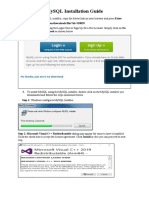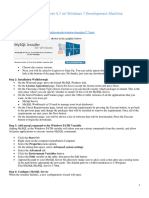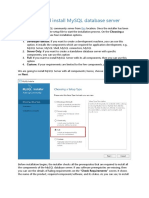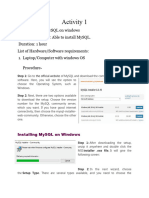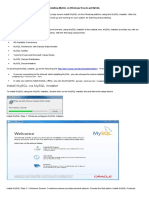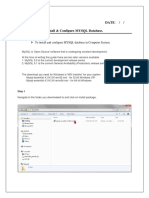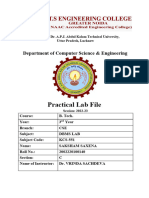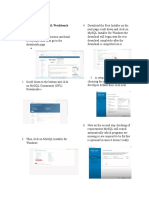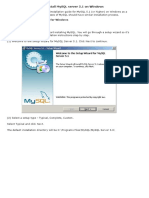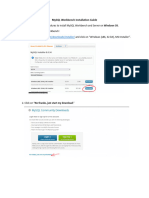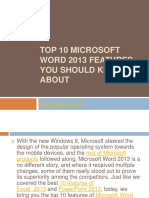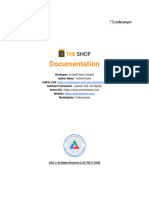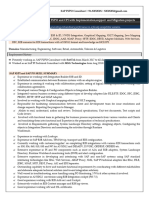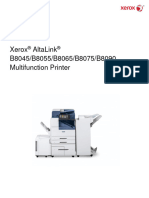0% found this document useful (0 votes)
30 views13 pagesMySQL Installation Guide (Windows) (1) - 4014
This document provides a step-by-step installation guide for MySQL on Windows, detailing the download options and installation process. Users are instructed to choose the Custom setup type to install the MySQL server and related tools, followed by configuration steps including setting up a password and applying configurations. After completing the installation, users can access MySQL Shell and MySQL Workbench using the password set during installation.
Uploaded by
Prashant SinghCopyright
© © All Rights Reserved
We take content rights seriously. If you suspect this is your content, claim it here.
Available Formats
Download as PDF, TXT or read online on Scribd
0% found this document useful (0 votes)
30 views13 pagesMySQL Installation Guide (Windows) (1) - 4014
This document provides a step-by-step installation guide for MySQL on Windows, detailing the download options and installation process. Users are instructed to choose the Custom setup type to install the MySQL server and related tools, followed by configuration steps including setting up a password and applying configurations. After completing the installation, users can access MySQL Shell and MySQL Workbench using the password set during installation.
Uploaded by
Prashant SinghCopyright
© © All Rights Reserved
We take content rights seriously. If you suspect this is your content, claim it here.
Available Formats
Download as PDF, TXT or read online on Scribd
/ 13













